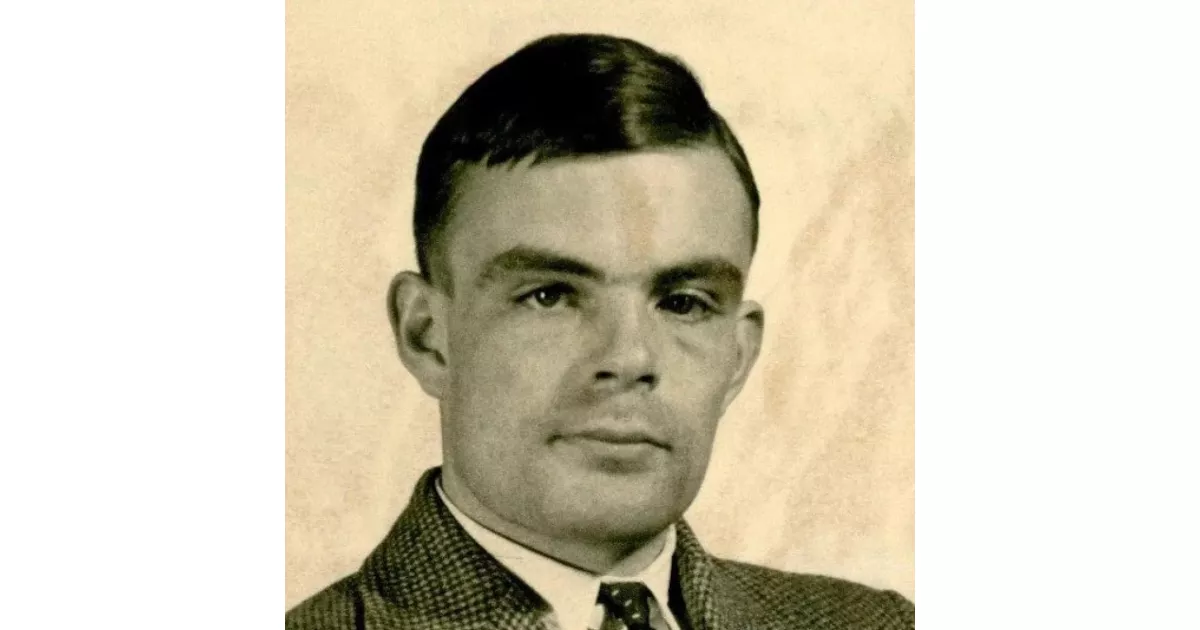Alan Mathison Turing was a highly influential English mathematician, computer scientist, logician, cryptanalyst, philosopher, and theoretical biologist. His most significant contribution was to theoretical computer science, where he formalized the concepts of algorithm and computation with the Turing machine. This model is considered a precursor to the general-purpose computer, earning Turing the title of "father of theoretical computer science." His work laid the foundation for modern computing and artificial intelligence.
October 1907: Marriage of Turing's Parents
Alan Turing's parents, Julius Mathison Turing and Ethel Sara Stoney, married in October 1907 in Dublin.
July 1911: Birth of Christopher Collan Morcom
Christopher Collan Morcom, a significant friend and considered Turing's first love, was born in July 1911.
June 1912: Birth of Alan Turing
Alan Mathison Turing was born in June 1912. He was an English mathematician, computer scientist, logician, cryptanalyst, philosopher, and theoretical biologist.
January 1922: Turing's Education at Hazelhurst Preparatory School
Between January 1922 and 1926, Alan Turing attended Hazelhurst Preparatory School.
1926: Turing Attends Sherborne School
Alan Turing started attending Sherborne School in 1926. On his first day, which coincided with the General Strike, he cycled 60 miles to the school.
1927: Turing Solves Advanced Problems
In 1927, Alan Turing displayed exceptional mathematical abilities, solving advanced problems without having formally studied calculus.
1927: Turing Family Purchases House in Guildford
In 1927, Alan Turing's family purchased a house in Guildford, where he lived during school holidays.
1928: Turing Encounters Einstein's Work
At the age of 16 in 1928, Alan Turing encountered and grasped Albert Einstein's work, even deducing Einstein's questioning of Newtonian laws.
1928: Entscheidungsproblem Posed
David Hilbert posed the Entscheidungsproblem (decision problem) in 1928, which Turing later addressed in his work.
February 1930: Death of Christopher Morcom
Christopher Morcom died in February 1930 due to complications from bovine tuberculosis, deeply impacting Turing.
February 1931: Cambridge Education Begins
Alan Turing began his undergraduate studies in mathematics at King's College, Cambridge in February 1931.
1931: Gödel's Incompleteness Theorems
Kurt Gödel published his incompleteness theorems, which influenced Turing's work on the decidability of problems.
February 1933: Turing Writes to Morcom's Mother
Alan Turing maintained contact with Christopher Morcom's mother after his death, writing to her on his birthday, including a letter in February 1933.
November 1934: Dissertation and First-Class Honours
Alan Turing completed his undergraduate studies with first-class honours in mathematics and submitted his dissertation, "On the Gaussian error function", in November 1934.
March 1935: Dissertation Acceptance and Master's Studies
Turing's dissertation was formally accepted in March 1935. He also began his master's studies and published his first paper.
April 1936: Decidability Problem Research and Publication
In April 1936, Turing sent a draft of his work on the decidability of problems to Max Newman and published "On Computable Numbers, with an Application to the Entscheidungsproblem".
September 1936: Studies at Princeton University
Turing began his studies under Alonzo Church at Princeton University in September 1936.
1937: Release of Snow White and the Seven Dwarfs
In 1937, Walt Disney's film Snow White and the Seven Dwarfs, reportedly Turing's favorite fairytale, was released. Biographers have speculated about the influence of the film, particularly the scene with the poisoned apple, on Turing.
1937: Fellowship at King's College
Turing was elected a Fellow of King's College, Cambridge, in 1937, based on the strength of his dissertation.
June 1938: PhD from Princeton
Turing received his PhD from Princeton University in June 1938. His dissertation introduced the concept of ordinal logic and relative computing.
July 1938: Completion of Studies at Princeton
Turing completed his studies at Princeton University in July 1938.
September 1938: Work with GC&CS
Turing began part-time work with the Government Code and Cypher School (GC&CS) in September 1938.
1938: Turing Earns Doctorate from Princeton
In 1938, Alan Turing received his doctorate from Princeton University.
July 1939: Polish Cipher Bureau Meeting
The Polish Cipher Bureau shared details of the Enigma machine with British and French intelligence in July 1939.
September 1939: Arrival at Bletchley Park
Turing reported to Bletchley Park on 4 September 1939, the day after the UK declared war on Germany.
December 1939: Naval Enigma Breakthrough
In December 1939, Turing solved a critical part of the German naval Enigma system, a more complex system than those used by other German services.
1939: Wittgenstein's Lectures and Debates
Turing attended Ludwig Wittgenstein's lectures on the foundations of mathematics and debated with him in 1939.
March 1940: First Bombe Installation
In March 1940, the first bombe, a machine designed by Alan Turing to break the German Enigma code, was installed. It worked by detecting contradictions in the cipher and eliminating incorrect settings.
May 1940: German Enigma Change
The Germans changed the Enigma machine's indicator procedure in May 1940.
1941: Proposal and Broken Engagement
In 1941, Turing proposed to Joan Clarke, a colleague at Hut 8. However, after revealing his homosexuality, he decided to end the engagement.
1941: Frustrations and Successes in Cryptanalysis
Throughout 1941, Turing and his team faced challenges due to limited resources despite successfully decrypting Enigma signals, and experiencing reduced shipping losses.
July 1942: Development of Turingery
In July 1942, Turing developed "Turingery", a technique against the Lorenz cipher used by the German Geheimschreiber machine. While he introduced the team to Tommy Flowers, who built the Colossus computer, Turing was not directly involved in Colossus's development.
November 1942: Collaboration with US Navy
During November 1942, Turing travelled to the United States to work with US Navy cryptanalysts on the naval Enigma and bombe construction in Washington. He also visited the Computing Machine Laboratory in Dayton, Ohio and worked with Bell Labs on secure speech devices.
March 1943: Return to Bletchley Park and Consulting Role
Upon returning to Bletchley Park in March 1943, Turing assumed the position of a general consultant for cryptanalysis. During his time in the US, Hugh Alexander had taken over as the head of Hut 8.
1945: Work on ACE Design
Between 1945 and 1947, Turing worked on the design of the ACE (Automatic Computing Engine) at the National Physical Laboratory (NPL) in Hampton, London.
February 1946: Presentation of ACE Design
On February 1946, Turing presented the first detailed design of the Automatic Computing Engine (ACE), a stored-program computer, predating von Neumann's less detailed EDVAC report.
1946: Formation of GCHQ
The Government Communications Headquarters (GCHQ) evolved from GC&CS in 1946.
1946: Awarded OBE
Turing was appointed an Officer of the Order of the British Empire (OBE) in 1946 for his wartime service.
1947: Living in Hampton, Working on ACE and Return to Cambridge
Between 1945 and 1947, Turing lived in Hampton while working on the ACE design. Due to secrecy surrounding his wartime work, he couldn't fully explain his design analysis, causing delays. Disillusioned, he went back to Cambridge for a sabbatical year in late 1947. During his sabbatical, he produced a paper on Intelligent Machinery and witnessed the Pilot ACE being built in his absence.
1947: Meeting with Konrad Zuse
In 1947, Turing met with German computer pioneer Konrad Zuse in Göttingen. The meeting was in the format of a colloquium and included attendees such as Womersley, Porter, Walther, and Billing.
1947: Sabbatical at Cambridge
In late 1947, Turing returned to Cambridge for a sabbatical year, during which he wrote a paper on Intelligent Machinery.
1948: Turing Joins Max Newman's Computing Machine Laboratory
Alan Turing joined Max Newman's Computing Machine Laboratory at the Victoria University of Manchester in 1948. He contributed to the development of the Manchester computers and pursued his interest in mathematical biology.
1948: Appointment at Manchester University and Work on Manchester Mark 1
In 1948 Turing was appointed reader in the Mathematics Department at Victoria University in Manchester. A year later, he became the deputy director of the Computing Machine Laboratory, working on software for the Manchester Mark 1 and its commercial version, the Ferranti Mark 1.
1948: Beginning of Chess Program Development
In 1948, Turing and D.G. Champernowne started developing a chess program called Turochamp.
1948: Olympic Tryout
Turing tried out for the 1948 British Olympic team as a marathon runner.
May 1950: Pilot ACE's First Program
On May 1950, the Pilot ACE, built in Turing's absence, ran its first program.
October 1950: Publication of "Computing Machinery and Intelligence"
In October 1950, Turing published "Computing Machinery and Intelligence", proposing the Turing test to define machine intelligence.
1950: Completion of Turochamp
In 1950, Turing and Champernowne completed the chess program Turochamp.
December 1951: Meeting Arnold Murray
In December 1951, Turing met Arnold Murray, a 19-year-old unemployed man, initiating a relationship that would have significant consequences.
1951: Security Risk Concerns
Following the defection of Guy Burgess and Donald Maclean in 1951, the Foreign Office heightened security concerns regarding homosexual individuals.
1951: Turning to Mathematical Biology
In 1951, at the age of 39, Alan Turing shifted his focus to mathematical biology, marking a significant turn in his career. This new interest led him to investigate morphogenesis.
January 1952: Publication of "The Chemical Basis of Morphogenesis"
In January 1952, Alan Turing published his influential paper "The Chemical Basis of Morphogenesis," exploring the development of patterns and shapes in biological organisms. He proposed the reaction-diffusion system, suggesting that interacting and diffusing chemicals could explain morphogenesis.
January 1952: Burglary and Arrest
In January 1952, a burglary at Turing's house and his subsequent report to the police, mentioning his relationship with Murray, led to their arrest for "gross indecency."
March 1952: Formal Conviction Date
Alan Turing's formal conviction under section 11 of the Criminal Law Amendment Act 1885 took place on March 31, 1952.
1952: Turing Convicted of Gross Indecency
Alan Turing was convicted of "gross indecency" in 1952 and subjected to chemical castration.
1952: Turing's Prosecution and Chemical Castration
In 1952, Alan Turing was prosecuted for homosexual acts and underwent chemical castration as an alternative to prison.
1952: Turochamp Implementation and Game
In 1952, Turing attempted to run Turochamp on a Ferranti Mark 1, but due to insufficient power, manually executed the program, playing a game against Alick Glennie and reportedly one against Champernowne's wife.
1952: Travel Restrictions and Therapy
In 1952, after his conviction, Turing faced travel restrictions to the United States but could visit other European countries. He traveled to Norway and also began seeing a psychiatrist, Dr. Franz Greenbaum.
May 1954: Turing Consults Fortune Teller
In May 1954, shortly before his death, Turing consulted a fortune-teller during a trip to St Annes-on-Sea with the Greenbaum family. This consultation, along with an earlier prediction that he would be a genius, has been suggested as a possible factor in his depressed state of mind.
June 1954: Death of Alan Turing
Alan Turing died in June 1954 at the age of 41 from cyanide poisoning.
June 1954: Death
On June 7, 1954, Alan Turing was found dead at his home at age 41. The cause of death was determined to be cyanide poisoning.
1992: Publication of Collected Works
Turing's later papers became available to the public in 1992 with the publication of the "Collected Works of A. M. Turing".
2005: John Leech Elected to Parliament
John Leech was elected as MP for Manchester Withington in 2005. He later became a key figure in the campaign for Turing's pardon.
August 2009: Petition for Apology Launched
A petition initiated by John Graham-Cumming was launched in August 2009, requesting a government apology for Turing's prosecution for homosexuality.
September 2009: Government Apology Issued
In September 2009, Prime Minister Gordon Brown issued a public apology, describing Turing's treatment as "appalling", in response to a petition that garnered over 30,000 signatures.
2009: Official Apology for Turing's Treatment
Following a public campaign, British Prime Minister Gordon Brown issued an official apology in 2009 for the appalling way Turing was treated.
December 2011: E-petition for Pardon Created
An e-petition was launched in December 2011, calling for a pardon for Turing's "gross indecency" conviction.
April 2012: Release of Turing's Cryptography Papers
Turing's classified papers on cryptography were released to the UK National Archives in April 2012.
June 2012: Blue Plaque Unveiling at Turing's Childhood Home
A blue plaque commemorating Alan Turing's birth was unveiled at his childhood home in St Leonards-on-Sea in June 2012, marking the centenary of his birth.
July 2012: Bill for Turing's Pardon Introduced
A bill to pardon Turing was introduced in the House of Lords in July 2012.
2012: Hox Genes and Turing's Model
In 2012, researchers found a connection between Hox genes and Turing's model of morphogenesis, showing that these genes influence digit formation in mice by adjusting the wavelength of a Turing-type mechanism.
November 2013: Pardon Bill Delayed
The bill for Turing's pardon was delayed in the House of Commons in November 2013 due to objections from MP Christopher Chope.
December 2013: Royal Pardon Granted
Queen Elizabeth II granted a pardon to Alan Turing for his conviction in December 2013.
February 2014: Government Proceeds with Royal Prerogative
In February 2014, before the pardon bill could be debated, the government opted to use the royal prerogative of mercy to pardon Turing.
August 2014: Royal Pardon Officially Pronounced
The Queen's pardon for Turing was officially pronounced in August 2014, marking a significant moment in recognizing his contributions and acknowledging the injustice he faced.
September 2016: Government Announces "Alan Turing Law"
In September 2016, the government announced its intention to extend pardons to others convicted under similar historical indecency offenses.
2017: 'Alan Turing Law'
The "Alan Turing Law" was enacted in the UK in 2017, retroactively pardoning men convicted under historical anti-homosexuality legislation.
2019: Turing Named Greatest Person of the 20th Century
A BBC audience vote named Alan Turing the greatest person of the 20th century in 2019.
2022: Value of Turing's Silver
In 2022, the value of the silver bars Turing buried was estimated at £8,000 adjusted for inflation and £48,000 at spot price.
July 2023: Suggestion for Turing Statue
In July 2023, Defence Secretary Ben Wallace suggested a permanent statue of Turing should be placed on the fourth plinth of Trafalgar Square, recognizing him as a significant war hero.
2023: Experimental Confirmation of Turing's Model
In 2023, a study by the American Physical Society experimentally confirmed Turing's mathematical model of morphogenesis using chia seeds. By manipulating moisture levels, researchers observed patterns similar to those in nature, validating Turing's insights.
Mentioned in this timeline
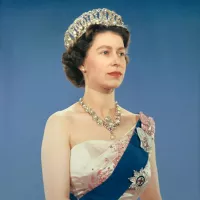
Elizabeth II reigned as Queen of the United Kingdom and...
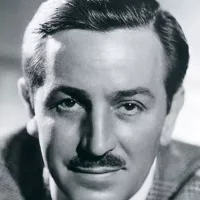
Walter Elias Disney was a highly influential American animator film...
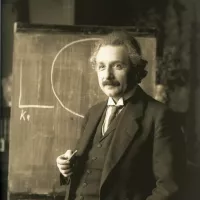
Albert Einstein - was a German-born theoretical physicist renowned for...

An apple is a widely cultivated edible fruit originating in...
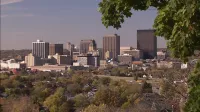
Dayton is a city in Ohio serving as the county...
Germany officially the Federal Republic of Germany is a Western...
Trending
24 minutes ago Cameron Crowe's Deep Music Knowledge Explored in New Interview: A True Test
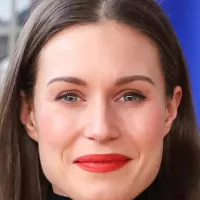
25 minutes ago Sanna Marin's leadership, dance video controversy, and memoir as world's youngest leader.
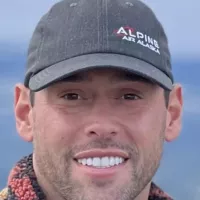
1 day ago Sydney Sweeney and Scooter Braun Spotted Together in Florida During Thanksgiving Holiday.
1 hour ago Republic Services Donates Turkeys Across Tennessee for Holidays, Helping Families in Need
2 hours ago Dylan Raiola Transfer Rumors Surface; Brother Decommits from Nebraska, Future Uncertain

2 hours ago Zach LaVine Confrontation: Kings Superfan Explains Viral Altercation and Ejection from Game.
Popular
Aftyn Alyssa Behn is an American politician currently serving as...

William Franklin Graham III commonly known as Franklin Graham is...

XXXTentacion born Jahseh Dwayne Ricardo Onfroy was a controversial yet...

Candace Owens is an American conservative political commentator and author...
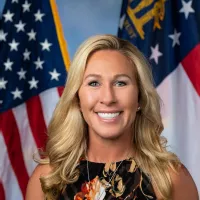
Marjorie Taylor Greene known as MTG is a U S...

Maxine Waters is an American politician who has served as...
